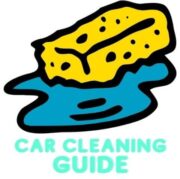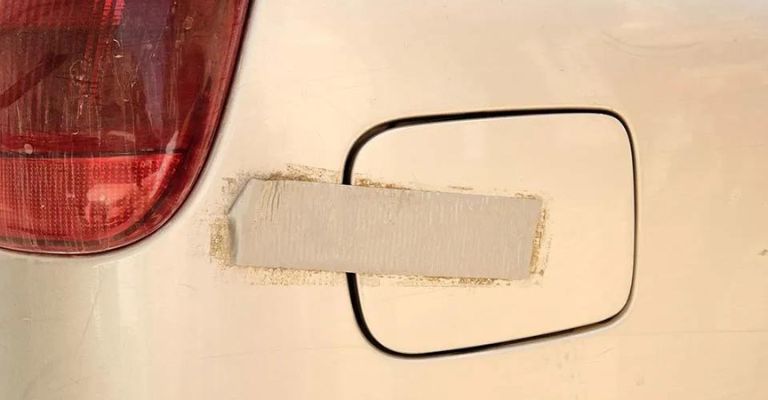Last Updated on September 22, 2023 by Chase Manhattan
Ever found yourself with an unforeseen vehicular mishap and a roll of duct tape handy? If you’ve ever pondered the question, “Will duct tape damage car paint?” you’re in the right place.
- How to Clean Car Carpets Quick and Easy - July 10, 2024
- Can You Touch Up Clear Coat? Yes and No (Here’s Why) - November 25, 2023
- How To Wax A Car By Hand: A Comprehensive Guide - November 14, 2023
This simple query doesn’t have a straight yes or no answer. It’s a complex blend of yes, no and a sprinkle of ‘it depends’. Various factors, including the quality of the tape and paint, the tape application, and environmental conditions come into play. So gear up as we dive under the hood and peel back the layers of this adhesive enigma to demystify the impact of duct tape on car paint!
Quick Navigation
So, Does Duct Tape Damage Car Paint?
Duct tape in itself doesn’t directly damage car paint. It becomes a potential problem when it leaves behind a sticky residue, which can be challenging to remove without causing damage. If your car needs repainting, the existing paint might peel or flake when removing the tape.
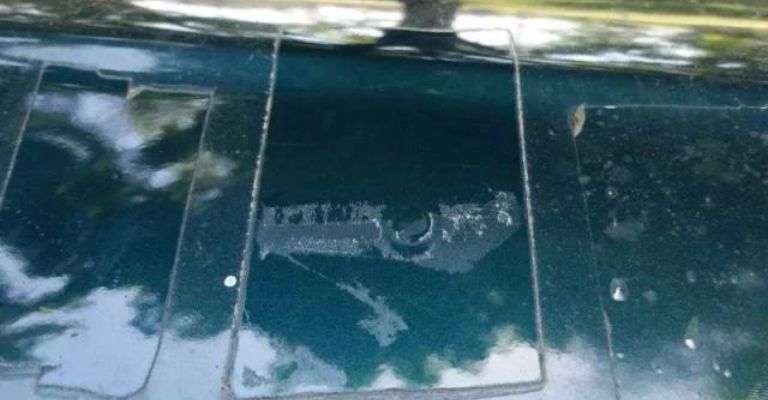
The adhesive on duct tape is designed to be durable, and its impact on your car’s paintwork depends on how long the tape is left on the vehicle. Environmental factors such as heat and rain can also affect the tape’s adhesive, potentially causing more sticking and a harder residue.
Situations Where it Will and Where it Won’t
In some situations, duct tape can be a quick fix without causing damage. For instance, if your car has a solid paint job and the tape is used temporarily, removed carefully, and the residue cleaned promptly, your paint should remain unscathed.
However, duct tape can potentially damage car paint under certain circumstances. If your car’s paint job is old or deteriorating, the paint might chip or flake when the tape is removed. Also, if the tape is left on the car for an extended period, the adhesive might harden and bond even more forcefully with the paint, making it difficult to remove without causing damage.
How To Get Duct Tape Off A Car Safely
When it comes to removing duct tape from your car, the keyword is ‘gentle.’ Here are some steps to help you get the job done without damaging the paint.
Equipment Needed
You might need the following items to safely remove duct tape residue from your car:
- Water
- A cleaning solvent
- Plastic card (as an alternative to a metal scraper)
- Rubbing alcohol or nail polish remover
- Hair dryer
Method One: Using a Solvent or Alcohol
This method involves using either rubbing alcohol or nail polish remover. You need to exercise caution with the amount you apply and ensure a gentle removal process. Alternatively, you can also use a cleaning solvent such as Goo Gone’s automotive range. This method is professional and ideal for cleaning off adhesive glue without damaging the paint job.
- Apply a few drops of the solvent or alcohol to areas with sticky adhesive glue.
- Allow the car to soak for several minutes, enabling the glue to soften.
- Using a clean rag, gently rub the adhesive and solvent until both are gone. There should be no traces left. Be especially gentle if using alcohol instead of a professional solvent.
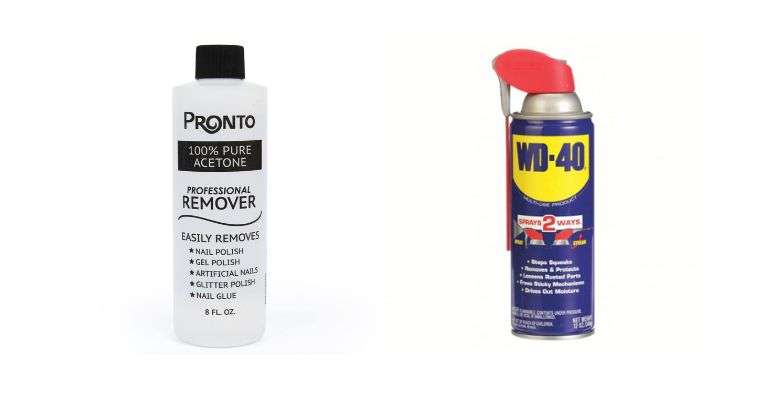
Method Two: Warm Water and Plastic Scraper
This method is the next safest for preserving a paint job. Using warm water and a scraper, follow these steps:
- Soak a rag in hot water.
- Place the rag on the sticky surface, leaving it pressed against the car for approximately fifteen minutes.
- After letting it soak the adhesive, remove the rag.
- Using a plastic scraper or a different rag, wipe the surface gently until it’s clean and dry.
Method Three: Heat and Plastic Scraper
This method, although time-consuming, is the least risky for a vehicle’s paint job. You can use a heater, hair dryer, or any equipment that emits hot air. A scraper is necessary for this method. With this method, you need to:
- Turn on the heating device.
- Hold it to the adhesive for about a minute.
- Gently scrape the softened glue.
- Repeat steps 1-3 in a gentle rhythm.
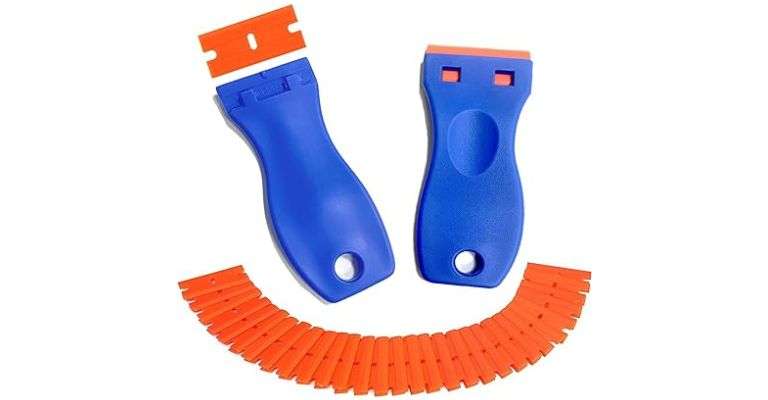
Residue Is Left Over, What Can I Do?
A leftover residue is pretty annoying after all that initial effort, isn’t it? So how can we get it off? Keep reading, and I’ll show you. I’ll even include a video for the visual learners out there.
How To Remove Duct Tape Residue
Removing duct tape residue from your car requires patience and care. It’s essential to avoid the use of harsh chemicals or abrasive materials that can scratch or fade the paint. Instead, consider using a specialized adhesive remover designed for car paint. Apply the remover as per the manufacturer’s instructions, usually letting it sit on the residue for a few minutes before gently wiping it off.
Recap of Important Notes
The central point to remember is that the potential harm duct tape can cause to your car’s paint is not from the tape itself but from the residue it leaves behind and how it’s removed. Therefore, if you have to use duct tape on your car’s exterior, ensure you do so sparingly, remove it carefully, and clean the residue promptly to minimize any potential damage.
Wrapping Up
In conclusion, while duct tape can be a handy tool for temporary fixes on your car, it’s crucial to be aware of the potential damage it can cause to your car’s paint. By following the guidelines mentioned above, you can ensure that the duct tape serves its purpose without leaving any lasting damage to your vehicle.
FAQs
Does duct tape damage car paint?
Not directly. The damage often comes from the sticky residue left behind and the process of removing it.
How can I remove duct tape from my car without damaging the paint?
Use a gentle method such as using a solvent, warm water, or a heater. Always remember to be gentle and avoid scraping the surface harshly.
What can I use to remove duct tape residue off my car?
You can use a cleaning solvent, hot water, or a heat source to soften the residue before gently scraping it off.
Remember, the key to preventing any damage to your car’s paint job when using duct tape is to apply it carefully, remove it gently, and clean any residue promptly and correctly. Happy cleaning!
